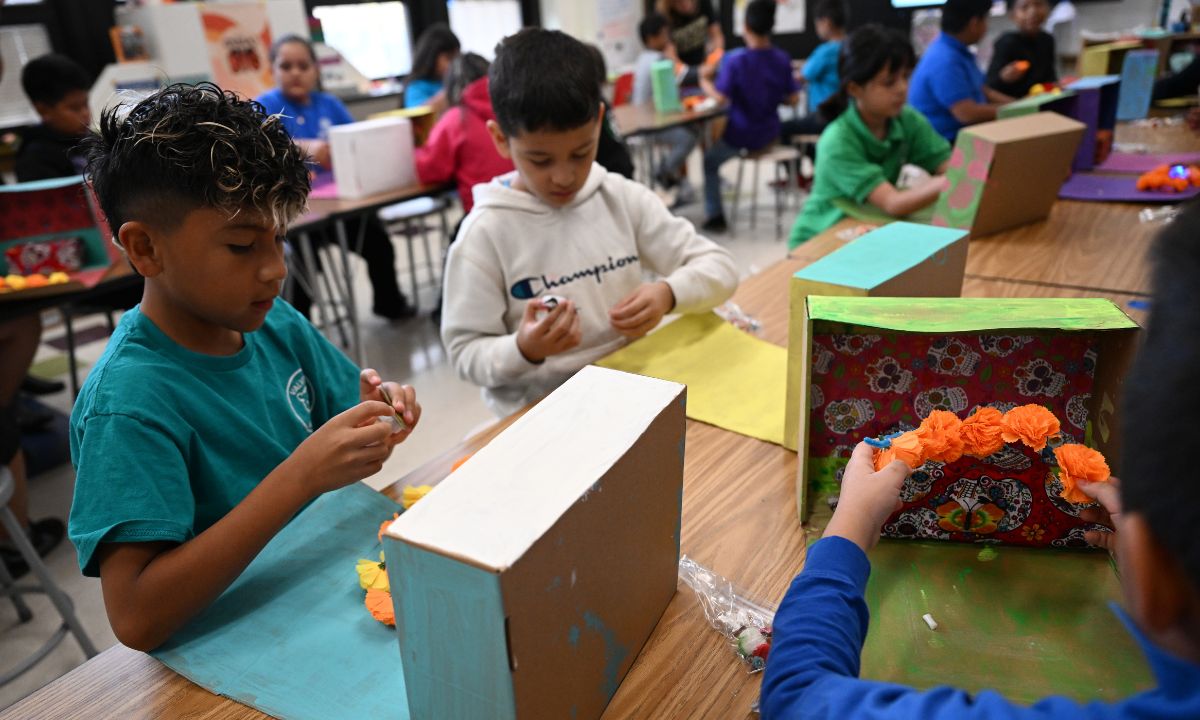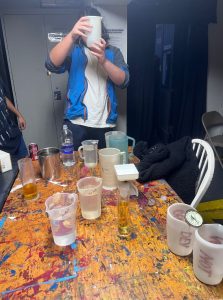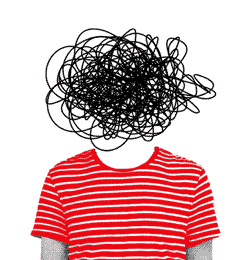How Arts Education Engages Students More Deeply in Other Subjects
Holloway: The arts help students perform better academically and develop critical life skills like problem-solving, collaboration, and adaptability.

Get stories like this delivered straight to your inbox. Sign up for The 74 Newsletter
“Who knew that art involved so much math!” said Max. That day, we ran out of the liquid developer we use in my darkroom photography class. Gabrielle, an 11th grader, stepped up to teach our class how to calculate the grams of powder and ounces of water we needed to create our own. A strong math student, Gabrielle helped Max, who struggles in math but loves photography, find the correct ratio. Max photographed his math formula and brought it to his math teacher, exclaiming, “Look at what I learned in the darkroom!”
As an arts educator and a mother of a K-12 student, I see firsthand how arts integration provides students with a space to express themselves, collaborate with peers, and engage more deeply in other subjects. The arts deepen my students’ learning, helping them apply skills within new contexts.

Studies show that being involved in the arts helps students perform better academically and develop critical life skills like problem-solving, collaboration, and adaptability. Students with four years of arts or music education have a graduation rate of 90%, compared to 73% for those without. I teach grades 7 through 12; like Max, many of my students apply their math and literacy skills in the arts in meaningful ways.
As Congress debates fiscal priorities, an appropriations bill proposes significant cuts to key school-related programs, including eliminating federal funding for Arts in Education grants that provide access to art for students in low-income communities. If these proposed reductions come to fruition, Gabrielle and Max would lose programs like my photography class. This wouldn’t just impact art instruction, but also math outcomes and the ability of my students to develop critical thinking skills.
It’s time to explore viable and creative paths to support arts education locally to re-engage students like Gabrielle and Max in their learning. Here are three things to consider:
Low-income schools need access to arts and arts integration. My child lost his access in 5th grade at his Title I school because the arts instructors rotated between schools. In contrast, I worked with a school in a high-income area where elementary students had access to robust arts programs. Correcting this disparity would ensure students in underfunded schools have as much access to arts as affluent students in our state.
Arts education can be strengthened by supporting alternative pathways into education and teacher preparation programs. My master’s degree in art is invaluable in giving my students real-world insights into post-secondary education and what a viable career in art might look like. The teacher preparation program I attended has helped me to understand the diverse needs of my students and effective classroom management. We must continue to invest in teacher preparation programs and in teachers’ ongoing professional learning, ensuring we stay up to date with the latest artistic trends, educational research, and teaching techniques.
Enhanced funding for arts across schools and districts allows students to engage in creativity and innovation, which can motivate them to stay in school. My charter school offers a robust career and technical education program that includes arts-related careers and arts-integrated curriculum, such as using arts learning to deepen their understanding of anatomy.
My students tell me that this is what keeps them feeling engaged, supported, and excited to come to school to learn. In addition to photography, students at my school can take 3D modeling, film, animation, graphic design, electronic integrated arts, computer repair, comic book and storyboarding, among other courses. Many of our students leave the school with a career-ready portfolio that allows them to move directly into a professional career in the arts or a related field.
My photography class helped Max to expand his math skills and empowered Gabrielle to support a classmate’s growth. My students learned that arts are connected to math—and beyond. Arts education isn’t just an extracurricular activity; it’s essential in developing well-rounded citizens. If we truly value education, we must protect and expand access to the arts, which will help ensure improved student outcomes and alignment to higher-wage careers. For Max, the arts helped him to feel more empowered to try in math; it gave him the idea that he can overcome any obstacle in his life. I am hopeful he will carry that forever.
Get stories like these delivered straight to your inbox. Sign up for The 74 Newsletter

;)
